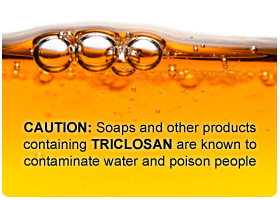Most indoor air pollution comes from sources inside the building, such as adhesives, carpeting, wood products, cleaning products, and many others, which email volatile organic compounds, VOCs. Hence, it is always better to get your carpet cleaning done first as a measure to ensure hygiene.The outdoor air that enters the buildingcan also be the main source of indoor air VOC pollution. The VOC indoor concentrations relate to the sick building syndrome, which affects the well being of its inhabitants.
One hundred and thirteen VOC compounds have been identified in an office environment. Their distribution by chemical family contribution is illustrated below.
VOC Distribution
- Other
- Alkanes
- Aromatic hydrocarbons
- Esters
- Alkenes
- Acids
- Alcohols
- Aldehydes
- Halocarbons
- Ketones
- Terpenes
- Organonitrogenates
- Glycols
- Other
- Alkanes
- Aromatic hydrocarbons
- Esters
- Alkenes
- Acids
- Alcohols
- Aldehydes
- Halocarbons
- Ketones
- Terpenes
- Organonitrogenates
- Glycols
Further, the chemical breakdown of composition of each family is given in the following table labelled ‘The most common VOC components as members of different chemical families.
VOC Components by their Chemical Families.
Alkanes
n-Hexane, n-heptane, n-octane, n-nonane, n-decane, n-undercane, n-dodecane, 2-methylpentane, 3-methylpentane, n-tridecane, n-tetradecane, n-pentadecane, n-hexadecane, cyclohexane, methylcyclohexane
Alcohols
Ethanol, isopropanol, 1-butanol, 3-ethyl-1-hexanol
Glycols
2-Methoxyethanol, 1-methoxy-2-propanol, 2-ethoxyethanol, 2-buthoxyethanol, 2-buthoxyethoxy-ethanol
Aldehydes
Butanal, pentanal, hexanal, heptanal, n-nonanal, decanal, benzaldehyde, formaldehyde
Ketones
Acetone, methylethylketone, cyclohexanone, methylisobutylketone, acetophenone
Halocarbons
Dichloromethane, chloroform, trichloroethylene, tetrachloroethylene, p-dichlorobenzene, trichlo-ronitromethane, 1,1,1-trichloroethane
Esters
Methyl acetate, ethyl acetate, butyl acetate, iso-popylacetate, 2-ethoxyethyl acetate, texanol iso-butyrate
Aromatic hydrocarbons
Benzene, toluene, ethylbenzene, m+p-xylene, styrene, 1,2,4-trimethylbenzene, m-ethyltoluene, 1,3,5-trimethylbenzene, n-propylbenzene, naphthalene, tetrahydrofuran, 2-pentylfuran, o-ethyltoluene, p-ethyltoluene
Acids
Acetic acid, pentanoic acid, hexanoic acid, octanoic acid
Terpenes
a-Pinene, DL-limonene, β-Pinene, 3-carene
Amides
N, N-Dimethylformamide
Organosulfurs
Carbon disulfide
Organonitrogenates
Acetonitrile
Breaking Down VOCs in Real-time
Every VOC listed above can be broken down with a sequence involving oxidative atmospheric hydroxyls. Hydroxyls can be artificially generated indoors used to rapidly break down volatile chemicals.
For more information about hydroxyls, consult one of our environmental engineer from mr natural®.


